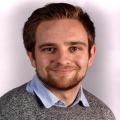NEW data has revealed the makeup of Bradford in terms of the district's ethnicity, religion, national identity and language.
The 2021 Census, carried out on March 21 last year, was filled out by more than 24 million households across England and Wales.
Bradford has the second largest Asian Pakistani community in England and Wales - with 25.5 per cent of people selecting the option as their ethnicity - after neighbouring Pendle (25.6 per cent).
Overall, 32.1 per cent of people chose Asian, one of the highest in England, an increase from 26.8 per cent on the previous decade.
61.1 per cent of people chose white as their ethnicity, one of the lowest in the country - down from 67.4 per cent in 2011 and by more than 20 per cent since 1991.
The area with the biggest white community is Addingham and Ilkley Moor (97.5 per cent) and the smallest was Toller Lane and Infirmary (7.3 per cent).
In looking at other ethnicities in the city, two per cent of people selected 'black', 2.7 per cent 'mixed' and two per cent 'other'.
The latest Census 2021 data also showed less than half of people in England and Wales identify as Christian, the first time the number has fallen below 50 per cent.
This was replicated in Bradford as only 33.4 per cent identified as the religion, the lowest in the north. This was down a huge 12.5 per cent from 2011.
Addingham and Ilkley Moor (56.7 per cent) had the most people who said their religion was Christianity, while Toller Lane and Infirmary had the lowest (6.1 per cent).
30.5 per cent of people identified as Muslim in Bradford, the highest in the north.
Bradford also has one of the largest Sikh communities in the north, at 0.9 per cent.
In Heaton Highgate, 73.1 per cent of respondents said they were Muslim and Haworth and Oxenhope was the lowest at 0.5 per cent.
28.2 per cent of Bradfordians selected no religion, the lowest in the north.
Holme Wood (48 per cent) had the largest amount of people who picked the option of religion, and Barkerend East (three per cent) was the lowest.
The other options selected were as follows; Buddhist (0.2 per cent), Hindu (0.9 per cent), Jewish (0 per cent), other religion (0.4 per cent) and not answered (5.5 per cent).






Comments: Our rules
We want our comments to be a lively and valuable part of our community - a place where readers can debate and engage with the most important local issues. The ability to comment on our stories is a privilege, not a right, however, and that privilege may be withdrawn if it is abused or misused.
Please report any comments that break our rules.
Read the rules hereLast Updated:
Report this comment Cancel